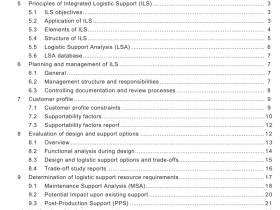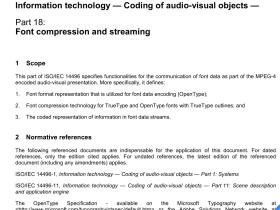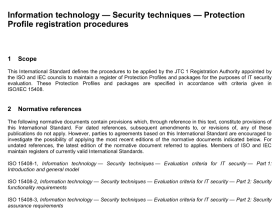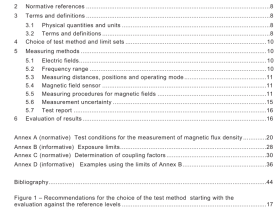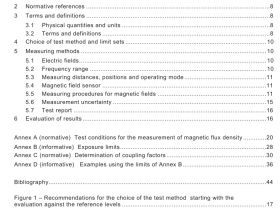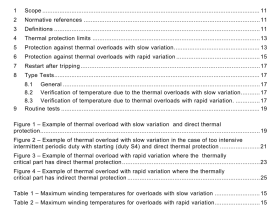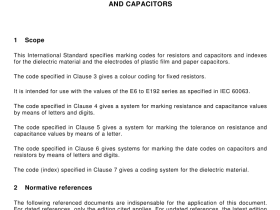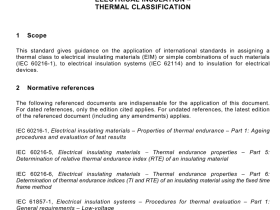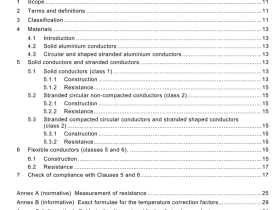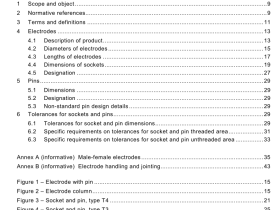ISO IEC 17311 pdf download
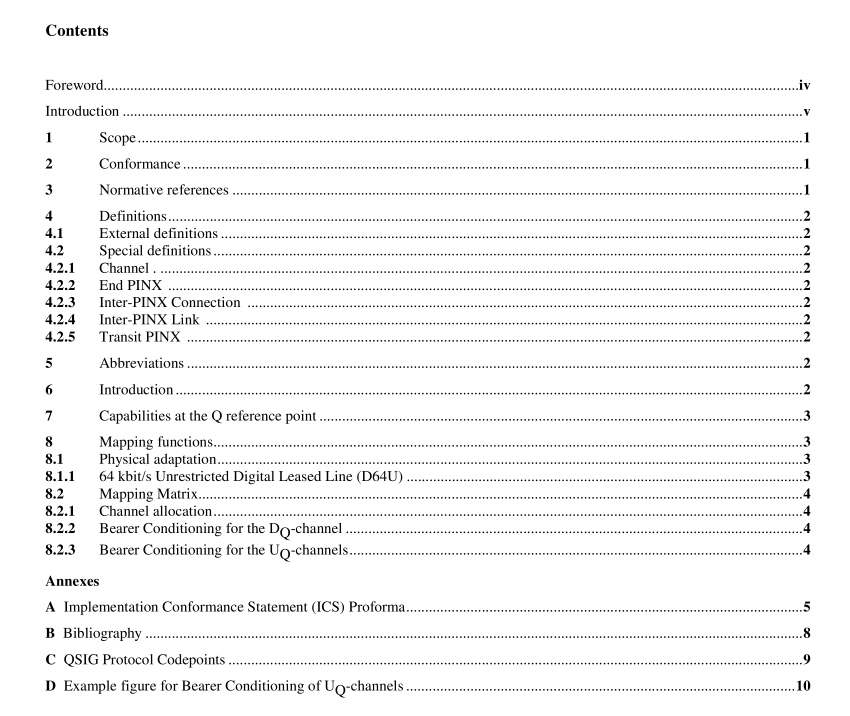
ISO IEC 17311 pdf download Information technology — Telecommunications and information exchange between systems — Private Integrated Services Network — Mapping functions for the employment of 64 kbit/s circuit mode connections with 8 kbit/s sub-multiplexing
1 Scope
This International Standard defines the mapping functions in exchanges of Private Integrated Services Networks (PISNs)required for the utilization of scenarios in which 64 kbit’s circuit mode connections are sub-multiplexed into one 16 kbitschannel for carrying inter-PINX signalling and 6 x 8 kbit/s channels for carrying inter-PINX user information.
NOTE 1 – This International Standard has been prepared to meet the specific needs of an application for a particular user organisation.However, it may also be applicable elsewhere.
In order to connect a Private Integrated Services Network Exchange (PINX) to another PINX, mapping functions are requiredto adapt the specific interfaces at the C reference point to the application at the Q reference point. As such, mapping functionsprovide for physical adaptation to the interface at the C reference point.Mapping functions also provide for the mapping ofuser channels and signalling information at the Q reference point to the appropriate channels or timeslots at the C referencepoint.
The C and Q reference points are defined in ISO/IEC 11579-1.
The type of interface at the C reference point covered by this International Standard is the 64 kbit’s Unrestricted Digital LeasedLine (D64U) Terminal Equipment Interface, in accordance with ITU-T Rec.G.703.
At the Q reference point the mapping provides an 8 kbits service for user channels to support the transfer of unrestricteddigital information and to support the transfer of speech, and a l6 kbit/s packet mode service for the signalling channel. Theapplied mapping is a static mapping,i.e. there is a fixed relationship between user and signalling channels at the Q referencepoint and the interface at the C reference point.
Management functions relating to failure management are outside the scope of this International Standard.
This International Standard is applicable to PINXs that can be interconnected to form a Private Integrated Services Network(PISN) and that support signalling protocols at the Q reference point.
2 Conformance
In order to conform to this International Standard, a PINX shall satisfy the requirements identified in the lmplementationConformance Statement (IcS) proforma in annex A.
3 Normative references
The following normative documents contain provisions which, through reference in this text, constitute provisions of thisInternational Standard.For dated references, subsequent amendments to, or revisions of, any of these publications do notapply.However, parties to agreements based on this International Standard are encouraged to investigate the possibility ofapplying the most recent editions of the normative documents indicated below.For undated references, the latest edition of thenormative document referred to applies.Members of ISO and IEC maintain registers of currently valid International Standards.ISOIEC 11579-1:1994, Information technology —Telecommunications and information exchange between systems — PrivateIntegrated Services Network – Part l: Reference configuration for PISN exchanges(PINX).
ITU-TRec.G.703:1998, Physical / electrical characteristics of hierarchical digital interfaces.
ITU-T Rec.Q.920:1993, Digital Subscriber Signalling System No. 1 (DSSI)— ISDN user-network interface data link layer 一General aspects.
ITU-T Rec. Q.920 Am. 1:2000,Amendment l to rTU-T Recommendation Q.920.
ITU-T Rec.Q.921:1997,1SDN user-network interface – Data link layer specification.
ITU-T Rec.Q.921 Am. 1:2000,Amendment l to ITU-T Recommendation 0.921.
